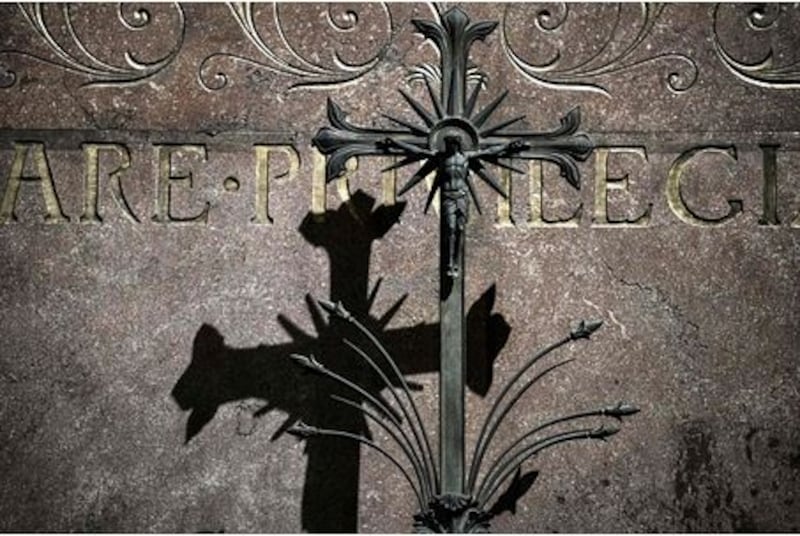The decisive vote last May to remove article 40.3.3 banning abortion from Bunreacht na hÉireann has generally come to be seen as dramatically underlining the declining influence of Catholicism in Ireland.
When one factors in the landmark vote of 2015 to introduce same-sex marriage, the lower-than-expected turnout for the visit of Pope Francis last August, the fall in those saying they are Catholic to just over 78 per cent in the 2016 census, the decline in weekly Mass attendance from 91 per cent in 1973 to about 32 per cent now, the overall picture looks grim for Ireland's Catholic Church.
However, I would argue that Irish Catholic bishops could do worse than look across the Irish Sea at the experience of English Catholicism.
I write as someone who has worked in 10 English local authority areas, and I would feel that in many ways it is easier to be a Catholic in Britain than Ireland, despite the fact that only 8.7 per cent of the population is of that tradition.

Precisely because Catholics are a minority, there is not the baggage associated with the church’s position in Ireland, where decades of close ties with the State and a dominant role in national life have been followed by intense resentment over the handling of the clerical child sex abuse cases.
One is conscious of a great respect for Catholicism here because it is not linked to the state
I wish to focus particularly on the two dioceses I am most familiar with, the archdiocese of Liverpool which, with over 46 per cent of its population Catholic, is the largest such concentration anywhere in Great Britain; and the nearby diocese of Salford. Just over 13 per cent of the latter's population is Catholic and, while considerably less than the neighbouring diocese, it is still well above the national figure.
Civic respect
The demographics are mainly, but not entirely, down to massive immigration from Ireland through the centuries. A tangible reminder of this is the memorial in the grounds of St Patrick’s Church in Liverpool’s Toxteth to eight priests who died ministering to immigrants from Ireland at the time of the Great Famine.
One is conscious of a great respect for Catholicism here because it is not linked to the state – and while there have been abuse cases they have not been anywhere near the same scale as in Ireland.
I have witnessed Marian processions in both cities being met with great respect by local people, and somehow would imagine the atmosphere might be less positive in Ireland.

Liverpool Catholicism is linked to the "establishment" to a greater degree than is the case in the rest of England, as exemplified by the annual Civic Mass at the Metropolitan Cathedral of Christ the King (commonly known as "Paddy's Wigwam"), attended by leading judges, police officers and politicians.
However, it has never lost its historic roots among the downtrodden and this is reflected in the work of Nugent Care, named after the 19th-century Liverpool-born priest Fr James Nugent, as well as of religious orders like the Missionaries of Charity who work with the homeless.
Christian denominations
Despite a history of sectarian conflict, a close partnership has built up with the Church of England in this region of England, exemplified in the joint running of a food bank and of the St Francis of Assisi Academy.
Irish Catholicism's best hope is to see itself, not as the dominant force it used to be, but as one minority among many others
The architect of the Catholic cathedral in Liverpool was a Protestant, while that for the Anglican cathedral was a Catholic, and the two cathedrals regularly hold joint Pentecost celebrations, which also involve other Christian denominations.
Likewise, in the Salford diocese Caritas does valuable work, as do homeless projects such as Cornerstone.
In Britain, growth in the non-religious population has not affected Catholicism as severely as the Church of England. The Catholic Church here remains an immigrant church. Built largely on arrivals from Ireland, it has been replenished by new arrivals from Poland, Italy and other parts of Europe, as well as from the Philippines, India and African countries such as Nigeria.
It seems to me that Irish Catholicism’s best hope is to see itself, not as the dominant force it used to be, but as one minority among many others in multifaith Ireland, working in partnership with other Christians, Muslims, Jews and others to serve the disadvantaged, without needing the law of the land to reinforce its convictions.
Declan McSweeney has worked as a journalist in Ireland and the UK for many years







